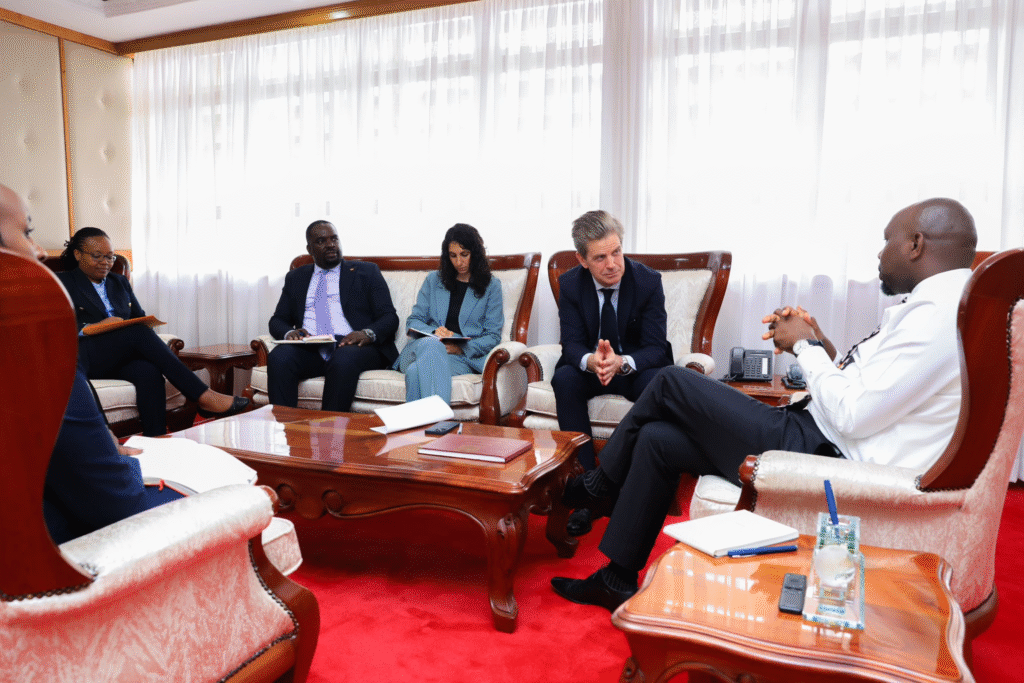Kenya’s ambitious Shirika Plan to transform refugee camps into thriving urban centers received a diplomatic boost this week as Interior Cabinet Secretary Kipchumba Murkomen held high-level talks with Danish Ambassador to Kenya, H.E. Stephan Schönemann.
The two leaders met in Nairobi to fast-track implementation of the multi-year initiative, which aims to transition Kenya’s refugee policy from emergency humanitarian aid to long-term, sustainable development.
The Shirika Plan envisions the conversion of the Kakuma and Dadaab refugee camps into integrated cities—marking a historic shift in how refugee populations are managed in Africa.
“We deeply appreciate Denmark’s continued support, especially as global humanitarian budgets are shrinking,” said CS Murkomen. “The Shirika Plan represents a future-oriented model rooted in inclusion, self-reliance, and shared prosperity.”

The plan is backed by earlier successes under the Kalobeyei and Garissa integrated development frameworks and is aligned with national priorities like Vision 2030 and the Bottom-Up Economic Transformation Agenda.
Kenya currently hosts over 700,000 refugees, largely from Somalia, South Sudan, and the DRC—many displaced for decades due to protracted regional conflicts.
Key components of the Shirika Plan include human capital development, economic empowerment, climate resilience, and a gradual shift toward government-led service delivery. The initiative will be rolled out in three phases between 2024 and 2035.
While the vision is bold, experts warn that success will depend on sustained funding, robust infrastructure development, and buy-in from host communities. Denmark’s involvement is expected to open the door for broader international support.
If successful, the Shirika Plan could serve as a model for refugee-hosting nations globally, balancing humanitarian duty with development strategy.